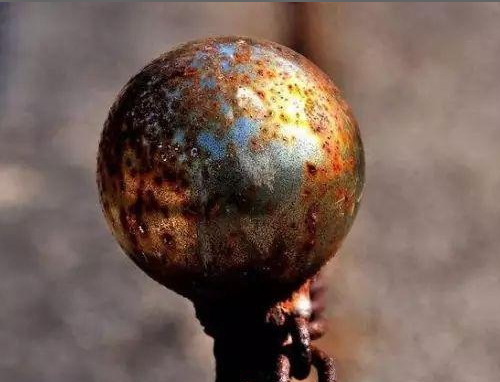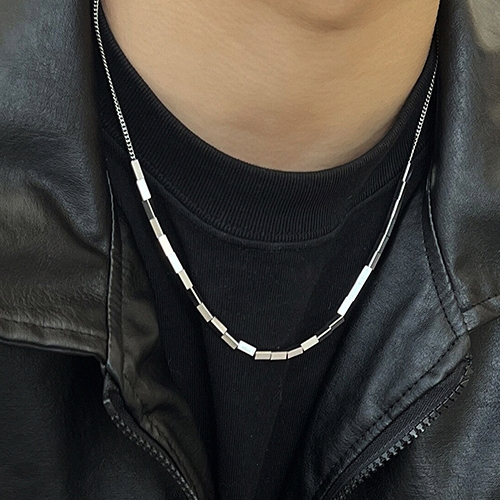Consumers often ask does stainless steel will tarnish or rust and does stainless steel jewelry will tarnish or rust, Do you have the same doubts?

The evolution of stainless steel
As early as 1821, people carried out a series of experiments on metals and alloys to invent a metal resistant to corrosion and oxidation. They found that to make stainless steel, and chromium must use. A Frenchman named Berthier decided to study the iron matrix and how chromium affects it. He found that at least 10% chrome needs to make the metal more durable. A few years later, another Frenchman named Bruce Sterling discovered that adding a small amount of carbon mixed with chrome and iron made a durable material called stainless steel!
In the early days after the invention of stainless steel, it uses in industrial circuits—the material used in railways, appliances, automobiles, and various other commercial products. Over time, jewelers have discovered the potential of stainless steel jewelry and how it can bring long-term value to customers. Watches and jewelry made of this material have grown in popularity over time. Both men and women who react to nickel can wear them. As long as the steel is selected correctly, appropriately processed, and maintained properly, stainless steel jewelry will not corrode, rust, and model.
But the rust and corrosion resistance of stainless steel is relative. Under what circumstances will stainless steel rust and fade?
1. The level of chromium content
European and American countries stipulate that the chromium content of stainless steel is 10.5%. When it is lower than this standard, chromium's dense oxide protective layer destroy, and the stainless steel will rust.
Much stainless steel jewelry will rust if used stainless steel with relatively low chromium content or electroplating on the surface of ordinary steel. When the electroplating layer peels off, it will naturally rust.
2. Changes in the environment
For example, 304 steel pipe, in a dry and clean atmosphere, has excellent anti-corrosion ability, but if it moves to the seaside area, it will rust quickly in the sea fog containing a lot of salt; and 316L steel pipe is a good performance.
Therefore, not stainless steel can resist corrosion, rust, and discoloration in any environment. So whether stainless steel will fade depends on which stainless steel it belongs to and its chromium content.
The corrosion resistance of stainless steel generally increases with increasing chromium content. The basic principle is that when there is enough chromium in the stainless steel, a thin and dense oxide film forms on the surface of the stainless steel, which can prevent further oxidation or corrosion of the stainless steel.
Stainless Steel has been famous for a long time. It is one of the most popular metals when making watches and jewelry. There are five bare stainless steel: austenitic, ferritic, martensitic, duplex stainless steel, and precipitation hardening stainless steel, and their chromium content varies.
Stainless steel jewelry is 316L steel made, austenitic stainless steel based on molybdenum-chromium with a chromium content of 17%.

Types of Stainless Steel
200 Series - Chromium-Nickel-Manganese Austenitic stainless steels.
300 Series - Chromium-Nickel Austenitic Stainless Steels.
301—Good elasticity, used for molded products. It can also harden by mechanical processing. Good weldability. Wear resistance and fatigue strength are better than 304 stainless steel.
302-corrosion resistance is the same as 304 because the carbon content is relatively high, and the strength is better.
303 - It is easier to cut than 304 by adding a small amount of sulfur and phosphorus.
304—that is, 18/8 stainless steel. GB grade is 0Cr18Ni9.
309—has better temperature resistance than 304.
316—After 304, the second most widely used steel grade, mainly used in the food industry and surgical equipment, added molybdenum to obtain a unique structure resistant to corrosion. Because of its better resistance to chloride corrosion than 304, it uses as "marine steel." SS316 is usually useing in nuclear fuel recovery units. Grade 18/10 stainless sheets of steel generally also meet this application level.
321—Similar to 304, except that the risk of corrosion of the material welds is reduced due to the addition of titanium.
400 series—ferritic and martensitic stainless steels.
408—Good heat resistance, weak corrosion resistance, 11% Cr, 8% Ni.
409 - The cheapest model (British and American), usually used as a car exhaust pipe, is ferritic stainless steel (chromium steel).
410—Martensitic (high-strength chromium steel), with good wear resistance and poor corrosion resistance.
416 - The addition of sulfur improves the processing properties of the material.
420 - "cutting grade" martensitic steel, the earliest stainless steel similar to Brinell high chromium steel. Also used in surgical knives, it can do very bright.
430—ferritic stainless steel, used for decoration, such as car accessories. Good formability, but poor temperature and corrosion resistance.
440—High-strength cutting tool steel, with slightly higher carbon content, high yield strength obtain after proper heat treatment, and the hardness can reach 58HRC, which is one of the hardest stainless steels. The most common application example is "razor blades." There are three commonly used models: 440A, 440B, 440C, and 440F (accessible to process).
500 Series - Heat Resistant Chromium Alloy Steel.
600 Series—Martensitic precipitation hardening stainless steel.
630—The most commonly used type of precipitation hardening stainless steel, usually also called 17-4; 17%Cr, 4%Ni.
What situations in daily life will cause ordinary stainless steel to rust and fade?
1. On the surface of stainless steel, there are deposits of dust or heterogeneous metal particles containing other metal elements. The condensed water between the promises and the stainless steel connects the two into a micro-battery in humid air, triggering an electrochemical reaction. The protective film is damaged, called electrochemical corrosion.
2. Organic juices (such as vegetables, noodle soup, sputum, etc.) adhere to the surface of stainless steel. In the presence of water and oxygen, organic acids form, and organic acids will corrode the metal surface for a long time.
3. The stainless steel surface adheres to substances containing acids, alkalis, and salts (such as alkali water and lime water splashing from decoration walls), causing local corrosion.
4. In the polluted air (such as the atmosphere containing a large amount of sulfide, carbon oxide, and nitrogen oxide), when encountering condensed water, it will form liquid spots of sulfuric acid, nitric acid, and acetic acid, causing chemical corrosion.
The above conditions can cause damage to the protective film on the stainless steel surface and cause rust. Therefore, to ensure that the metal surface is permanently bright and not rusted, the following suggestions are recommended:
1. The surface of decorative stainless steel must be cleaned and scrubbed frequently to remove attachments and eliminate external factors that cause modification.
2. 316 stainless steel should use in seaside areas, and 316 material can resist seawater corrosion.
3. The chemical composition of some stainless steel pipes on the market cannot meet the corresponding national standards and cannot meet the 304 material requirements. Therefore, it will also cause rust, requiring users to choose products from reputable manufacturers carefully.
The above can explain whether stainless steel jewelry will rust and under which circumstances it will tarnish or rust.
Contact: Lee
Phone: 008615812571762
E-mail: le@lerings.com
Whatsapp:008615812571762
Add: 3F,#4 ShangXing Road, XingAn ChangAn Town, DongGuan,China
We chat